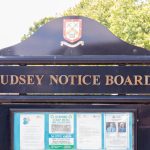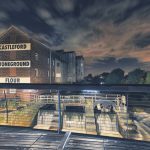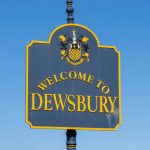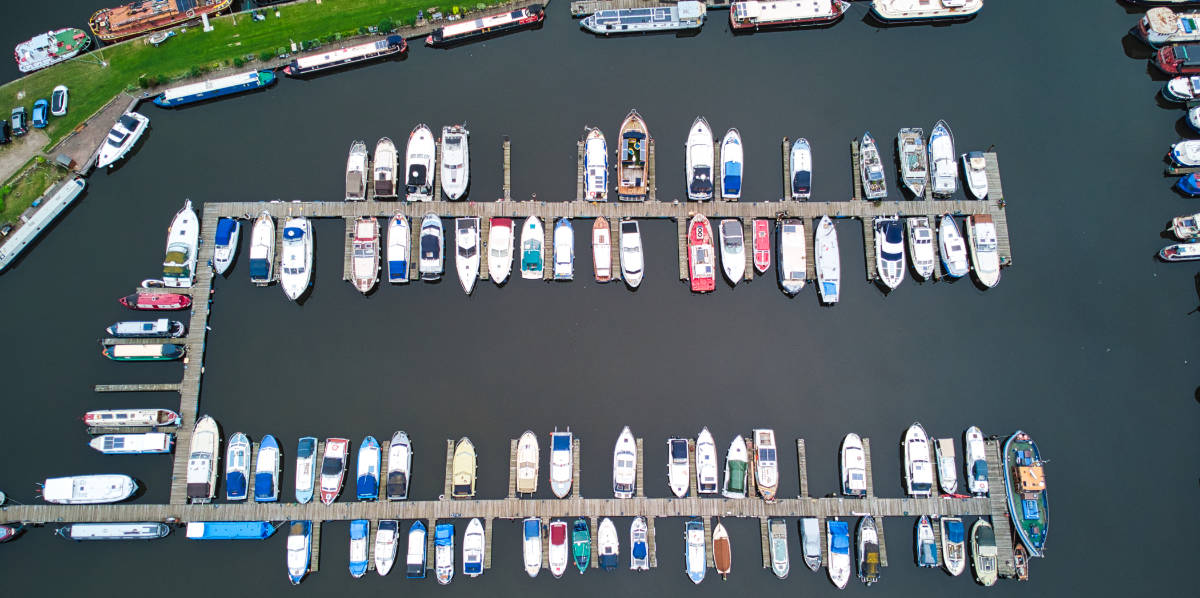
Goole was named by Danes in Old Norse, not ghosts. There Are No Ghouls Here. Promise.
Although if there were ghouls, they might not tell you. We are 80% sure it’s not a trap. Maybe 75%. Let’s get to know the town of Goole in East Riding, Yorkshire, in the interests of national safety. Part of Yorkshire, historically Eoferwicscir. The Danes split Yorkshire into three parts, which they called “Ridings.” East Riding is home to the occasional Goole, but that’s nothing to be afraid of. Here is everything we know about this already entertaining town.
Early History
Let us preface this by saying it is exceptionally difficult to find history articles for resources here. Every search asks us if we mean Google, instead. Nevertheless, we persist.
Yorkshire contains a wealth of ancient artefacts. From the Iron Age and the Bronze Age, from the Neolithic period, and all the way down through history. This area has plenty to search through. Discover locally found artefacts in the museum or head out with your metal detector. Just make sure you get permission first!
After BC became AD, the British Isles were not as we know them now. They were split into territories based on which tribe, kingdom, or clan, had the most control in that area. In Yorkshire, the Brigantes tribe were the larger. They ruled all the way up to the northern borders. The Brigantes were not one tribe either, they were a union of many tribes. Back in those days, you clung together for safety. The second tribe were the Parisi. They were much smaller and if the Romans hadn’t come, the other tribe would likely have amalgamated with them.
After the Romans came, all those little tribes were either conquered or married into. Romans lived in East Yorkshire, garrisoning the area while invading ever farther north. Archaeologists believe they have enough evidence to finally pinpoint the earliest Roman settlement in the North Humber area. It’s north of Goole but it is not that far away.
The Romans Head Home
The Romans retreated circa 40AD because the Empire back home was faltering. When they retreated they left a number of straight roads, houses, barracks, garrisons, and temples behind them. As religion evolved, many of the old temples became churches or shrines. When historians say that a church was built on an earlier place of worship, this is part of what they mean. Roman temples were likely built on those that existed before, too.
Between the middle of the 5th century and the early 7th, Germanic tribes started drifting east and looking for new lands to settle. By this point, England didn’t exist yet and the towns the Romans left were barely occupied. New settlers had the pick of the land. The language of the time became Roman muddled with Angle and Saxon. After the Danes settled, this mixture of languages became known as Old English.
Those Germanic tribes eventually stopped the slow filtering into Britain, we would guess around the time when the Viking ships started patrolling. The Vikings would pass by Goole on their way to York to invade in 866. Up until then, there were two distinct types of ship. There were the ships that you built to go to sea with, and the ships that you built to fish with. The stunning concept the Vikings brought was a sea ship able to sail upriver. When they first attacked Lindisfarne, there was no inclination of that threat. A few years later and they razed York to the ground.
Vikings
For the next few hundred years, the Vikings would attack, settle the land, and integrate with society. The sacking of York meant the Vikings used the city as a base to strike out from and take control of the north of England. If northerners really are fierce, it may be because of all that warrior spirit in the bloodlines.
The area is at the mouth of the inlet and would have sported a watchtower at the very least. King Alfred would use signal fires to relay attacks by the Vikings. The Danes would use waypoints to trap and defeat enemies or watch for other ships approaching. Although there was no formal town of Goole until the 1800s, the area would still be settled back then.
Just for reference: a Viking was a Dane or Danish captive who was attacking the land. Once they stopped attacking and settled down, they returned to Danish status. To go Viking was to go on an adventure. Historians are still arguing over whether it is a noun or a verb.
Medieval Era
By 1066, the area was about to embark on a huge war with William the Conqueror. He had a notoriously difficult time taking control in the north. He would erect castles at intervals close enough to each other to disperse troops if need be. The castles were often small but frequent. It was all a bad deal for William due to the amount he spent on it. Of course, by then the Danelaw was the standard leadership in the north.
King Alfred recovered from annihilation to unite the counties of southern England. His vision: Englaland, did not occur in his lifetime. It would happen later through his children. The three main kingdoms of the south conjoined they then had to convince the kingdoms of Northumberland and Yorkshire to submit to it. Almost as soon as it happened, here came William to mess it all up. He immediately ordered a survey of the lands he had captured, but the Domesday surveyors did not make it all the way north. As such, Goole is not in the book and Yorkshire is a little thin on the ground altogether.
The Port Grows
Goole remained a small port until a Dutch engineer surveyed the land and started draining the marshes and diverting the rivers around the 1600s. The area about 3 miles south of Goole was known as Goole Fields for a long time. This area was formerly marshland until 1628 when engineer Cornelius Vermuyden had the land drained. The marshland covered roughly 5 acres to the south of the Humber, leaving much of the land unusable. More arable land meant better living and Goole began to grow.
Fun Facts and Goole Trivia
At this point in any travel guide, we strip back the layers of mystery and provide an insight into all the local gossip. Sit back, open a bag of popcorn, and get ready to memorise some fun facts about Goole that you can chat about at parties.
- Goole has the nickname of “the port of green fields.” This is due to the inland nature of the port, surrounded by gorgeous English green fields and rolling hills.
- Of course, if you Google a map of Goole, the SERP asks you if you mean “Google.” This is a cause of extreme irritation to locals.
- The water towers are 145ft and hold 750,000 gallons of water… just in case you were wondering.
- Situated on the River Ouse, the same river that York sits on, Goole is Britain’s furthest inland port. The position inland of the Humber means the river is still wide enough and deep enough to ship cargo to. It also means that the Vikings most definitely sailed through here on their way to raid York in 866.
- King Charles I ordered the building of the old town in the 1620s after engineers diverted the Don into the Ouse.
- Goole rivalled Hull as a trade centre in the old days. Many European shipping firms made this town their base. It was cheaper than the big city and had the same open sea access.
- There are two separate marinas in Goole. If you need somewhere to park that yacht, this is the place.
Whats In a name
Rumours about the name abound. Some sources say Goole is the Anglo-Saxon word for ‘open sewer.’ We put it through an Anglo-Saxon (Old English) translator and the word was not recognised. We reversed the search to include ‘open’ and ‘sewer’ and could find no evidence to support this claim. The word for sewer in Old English is adelseaþ. More likely, this phrase came about through other towns being diminutive. If you can prove us wrong feel free to add your comments and sources at the end of the article so we can check it out.Another source claims the word comes from Middle English instead, where Goole means ‘outlet to a river.’
And on that incredibly rich note, let’s turn our attention back to Goole’s history.
The Industrial Period
During the industrial era, the miners of Yorkshire found ingenious ways to transport the coal down to the port of Goole, then on to the rest of Europe. Goole coal-powered industry across multiple countries and multiple ports. To get the coal down to the port, the Ouse would be full of compartment boats nicknamed Tom Puddings, because they looked like pudding pots. The little boats would link together in a chain and a tug would pull the all the way down the river.
Once there, the coal would ship both to Europe and down to London. Hydraulics would tip the boats to empty them. If you visit the docks you can still see one of these hoists, which is now a Grade II listed building. To this day, the skyline approaching Goole is filled with cranes and the spire of St. John’s Church which shadows the port.
Get The Map Out
We dug out an old map from 1805. You can see that Goole was already a substantial small town with a ship dock and large bridge. You should also see a mile or so around the southern arm of the river where Goole Hall already stood. Now a care home, this Georgian mansion house is listed as grade II with Historic England. It is now a residential care home, so don’t get too close. You will scare the old dears.
After the marshes drained and the river diverted, the town was free to grow. In 1823 the Aire and Calder Navigation Company connected Goole to the Leeds canal. This opened up the port to increase trade substantially, rather than trading fish to the surrounding towns. The town received a port charter in 1826, several years after the initial dock appeared. The town received its first hotel in 1824 but was almost immediately turned into the official building for the Air and Alder Navigation Docks. The hotel is still going and is now named the Lowther Hotel. It gained refurbishment in 2010 and reopened.
The Modern Town of Goole, UK
The modern port of Goole still sees around 2 million tons of materials passing through it each year. The cargo includes materials used in biomass production, timber, construction materials, and even parts of massive wind turbines.
During WWI the port was bombed by a zeppelin. Zeppelins couldn’t do the same damage as the later-developed warplanes, nor were they as lethal as the warships who would open fire on the coastline. Nevertheless, this particular bomb killed 26 people in one fell strike. There is a memorial to this event in the cemetery on Hook Road.
Modern Goole has plenty of groups to join. Residents set up a museum, created a few theatre clubs, and even has a youth group. It is one of those large towns that are still small enough to have a real sense of community spirit. The town has grown steadily without the problems facing the rest of Yorkshire. Since it was a transport town, not a coal mining town, it escaped some of the environmental damage that the more industrial towns are still working on rewilding.
Modern Goole has a population of nearly 22,000 people. Although it remains 50 miles inland from the sea it trades by, it still has a high annual turnover as a port. It is a calm town with beautiful buildings and even better countryside. There are also some gorgeous views out over the rivers.
Famous People
There have been a few famous faces that have emerged from Goole. Yorkshire has enough talent to perform the Royal Variety show all by itself and Goole is no exception. Here are some of the famous people that you may recognise if you hang around town long enough:
- Alternative rock group Sandra’s Wedding came from here.
- Composer Gavin Bryers is a Goole man, he also plays the double bass.
- Anne Greaves was from here. She was sensational. She was the first woman to join the Institute of Quarrying and she even made artificial stone in her own quarry.
- Comedy writer Roy Clarke lives here.
- The 60’s singing group the Dale Sisters were from here.
OK, so you might not meet Little Mix over the peas, but you never know.
What are Goole’s Most Noted Landmark?
Goole is famous for its Salt and Pepper pots. These are not actual salt and pepper shakers, but twin water towers that resemble them. The brick tower to the left as shown was built in 1885 It was replaced by the concrete one in 1927 and although they may not be the pinnacle of architectural excellence they still make a nice talking point.
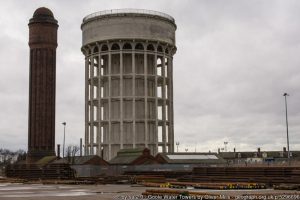
The centenary clock, erected in 1926, runs these close though.
Best Attractions in Goole
Now comes the part you have all been waiting for: the best things to see and do in Goole. This is where you find out if it will make a good place to create nostalgic family memories of summer holidays with your loved ones or not. Whether you are just passing through or stopping for a fortnight: here are the best bits of Goole.
Historic Sites
Goole Hall is one of the fabulous Grade II listed buildings in town. Formerly a Georgian Mansion, it is now a Residential Care Facility. The care home is now part of Old Goole, south of the docks. When we researched old maps of the area, this separate residential section of town had a manor house complete with a few outbuildings. The town has grown greatly since then.
Nearby
If you have the car with you or fancy a bit of a walk then a trip to the nearby village of Whitgift. It’s only around four miles away and well worth the trip. The star attraction is the Grade I listed St Mary Magdalene Church pictured below. However, it also has a Grade II listed Georgian Hall and a working Lighthouse!
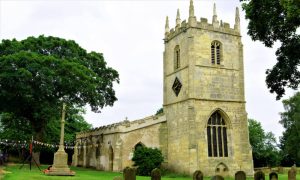
St Mary Magdalene Church
Image: Peter is Shaw 1991/Shutterstock.com
If architecture is your thing then Howden also needs to be on the itinerary. It’s even closer being around three miles away and worth the trip just to see the Minster there. It has a full-on gothic style and records all the way back to before the Normans invaded. It is a Grade I listed building and when you see how dramatic it is, you will understand why.
Outdoor Attractions
You must take a wander around the Oakhill Nature Reserve area. This beautiful series of walks take you through woodland and preservation areas all along the riverbank. The area has a lovely pond and several seating areas for rest breaks. It is run by the Friends of Oakhill volunteer group.
Similarly, head to the Blacktoft Sands conservation site, which is ideal for bird watchers and animal spotters. You can spy marsh harriers, avocets, snipe, tree sparrows, red buntings, and even see the odd fox or deer. Marshlands like this natural habitat are dying out in Britain, so it is more important than ever to conserve these areas. This site is run by the RSPB.
Recreation
Go fish or admire the sculpture in the Sugar Mill Ponds off Rawcliffe Bridge. This is a pleasant place for feeding the swans and letting the kids run free. This area has a nature reserve plus its own angling club.
Cultural Sites
If you want to get some culture into you but don’t have a big budget, Goole Museum tells you all about the town with free entry. This is where the Goole library resides, and it contains all the gaps in historic information that we had to skip over. If you want to learn what it was like to live in Yorkshire during the industrial era, this is where you come.
Sports and Teams
Goole AFC plays in the Toolstation Northern Counties East Football League, which is a bit of a mouthful. They are a small-town team with big dreams. Goole also has a RUFC team. There are also the Goole Vikings ARLFC team to support. There are two golf clubs within a short drive of town. To the west, you have Drax Golf Club, and to the north, there is the Boothferry Golf Club, which has a driving range, too.
Where to go Shopping in Goole, East Yorkshire?
Goole has a number of great shops. Between heading for a workout at East Riding Leisure and enjoying the Mulberry Gardens, you can visit the well-named new Salt & Pepper Pots Market. There is a Home Bargains, a New Look and Peacocks, so they have most age groups covered.
Where to Eat and Drink?
The Viking, now the Hungry Horse, is the best place to eat in town. After that, you have La Anchor Bar & Restaurant to enjoy, and the Italian Pizza place for takeaway. Add the Counting House and the Capricorn restaurant to that list if you fancy a decent cocktail.
Notable Attractions Nearby Goole
Knowing about other attractions in the area can help you decide if a staycation is the right choice for you. Here are all the nearby towns you get to explore if you visit Goole this summer:
- Go shopping in the weekly markets held in nearby Beverley.
- Visit East Riding’s best beach town in Bridlington.
- Go on a pilgrimage to the beautiful Ripon
- Why not take a trip east along the river and visit Hull, another great port town.
- Don’t miss out on a trip to York while you are in this part of the country.
That should give you plenty of places to stop by unannounced if you are staying in Goole. Enjoy your trip and come back to us to research next year’s holiday.
How to Get There?
If only you knew how to get to this quaint port town… Oh, wait… We can tell you.
By Road
The town of Goole is just off the M62 heading east, which is just north of the M18.
By Air
The nearest airport is Leeds Bradford airport.
By Rail
Goole train station is on the northern line.
By Sea
Fortunately, Goole has its own port and two marinas. So no issues there for the boat-loving amongst you.
Got Five Minutes?
Here at Five Minutes Spare, we like nothing better than to share our not-so-worldly wisdom with our readers. If you want to know more about English towns, head to our website and browse our travel guides. If you want to show support for the cause, then head to Facebook and drop us a wee follow. Whatever you do, don’t forget to come back.
Header Image: Phil Silverman/Shutterstock.com

